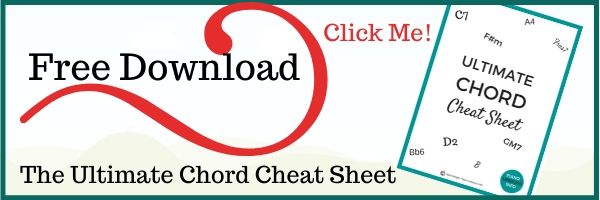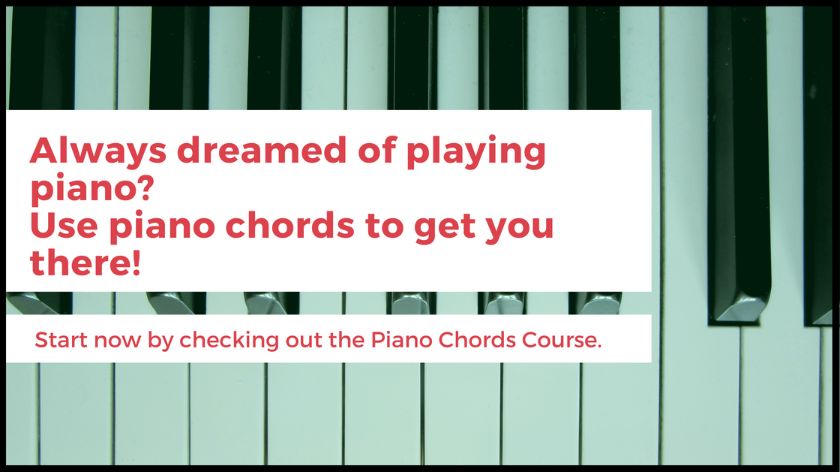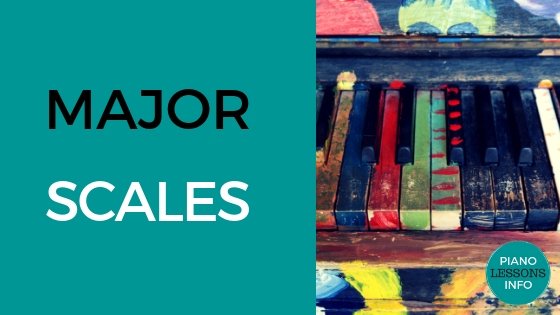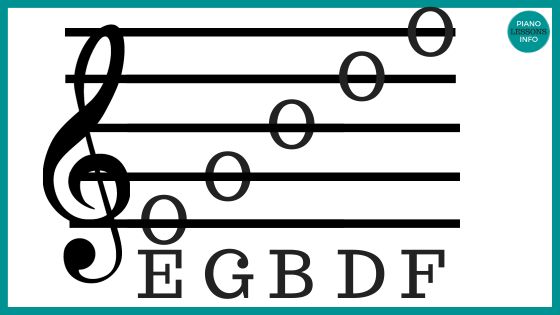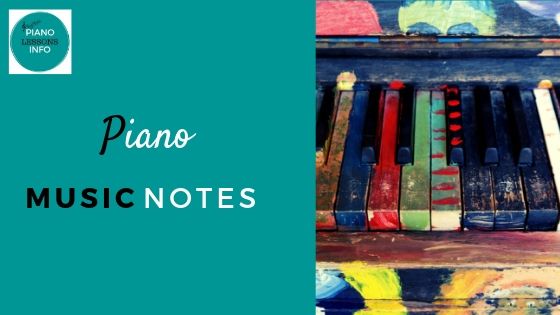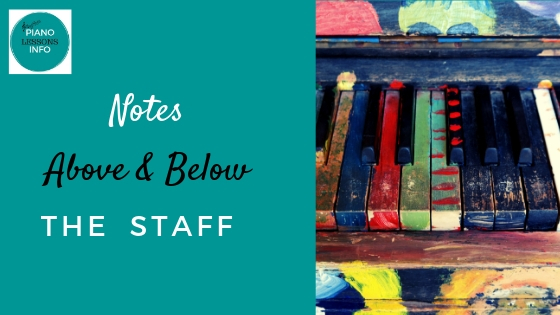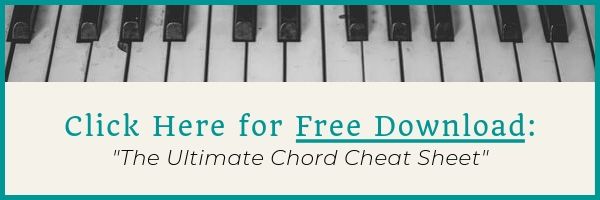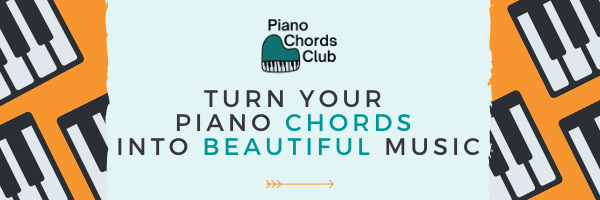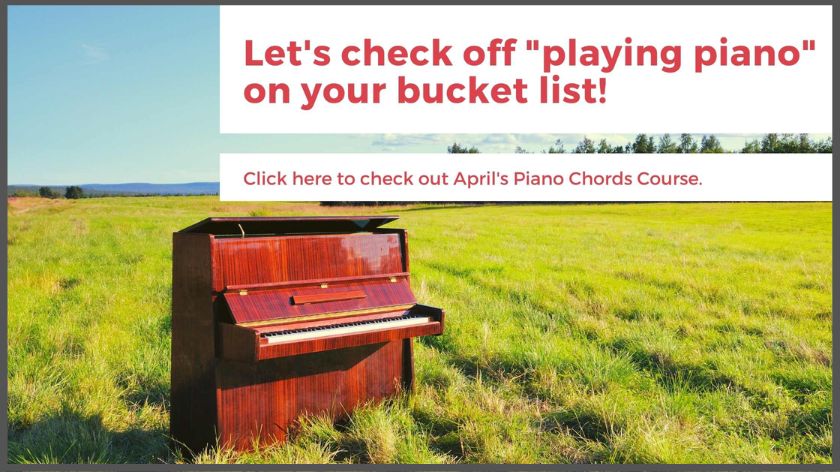Want To Know How To
Read Piano Notes?
It’s not as hard as it looks. Learning how to read piano notes is about learning a pattern – as many things are in music. First, if you’re not sure about which notes are which on the piano keyboard, learn the piano key notes.
Here we'll go over:
- the music alphabet
- treble & bass clefs (& what they are)
- what the lines and spaces mean
- treble clef lines and spaces
- bass clef lines and spaces
- how written music matches the piano keys
- what black keys are called
- time signatures (start of rhythm)
- notes & their rhythm
- a note naming quiz
- what to do next
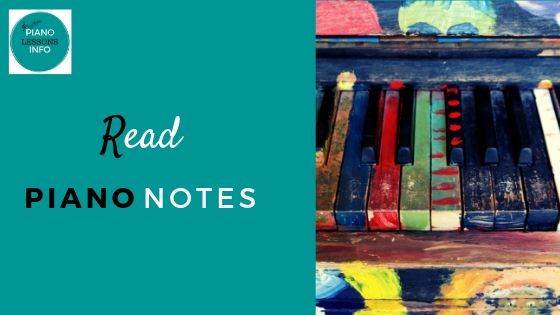
Learn The Music Alphabet
The first thing you need to learn is the music alphabet.
In music, notes are named after letters. There’s a “musical alphabet” that’s quite a bit shorter than the English one. It starts at A and ends at G. Then it repeats.
For example: A, B, C, D, E, F, G, A, B, etc.
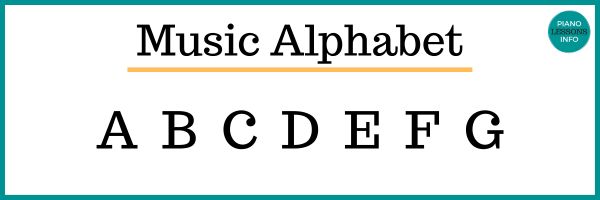
I should note here that not everyone learns this way. In some countries, especially in Asia, they use a the sol-fa method. I did not learn this way and am less familiar with it but you can check it out there if you're curious.
Piano Reads Music Using 2 Clefs
To play the piano, you need to learn about 2 “clefs.” They are signs which basically tell you whether to play high notes or low notes. They are the Treble Clef and Bass Clef.
Treble Clef: The treble clef is for high notes The treble clef is for high notes |
Bass Clef: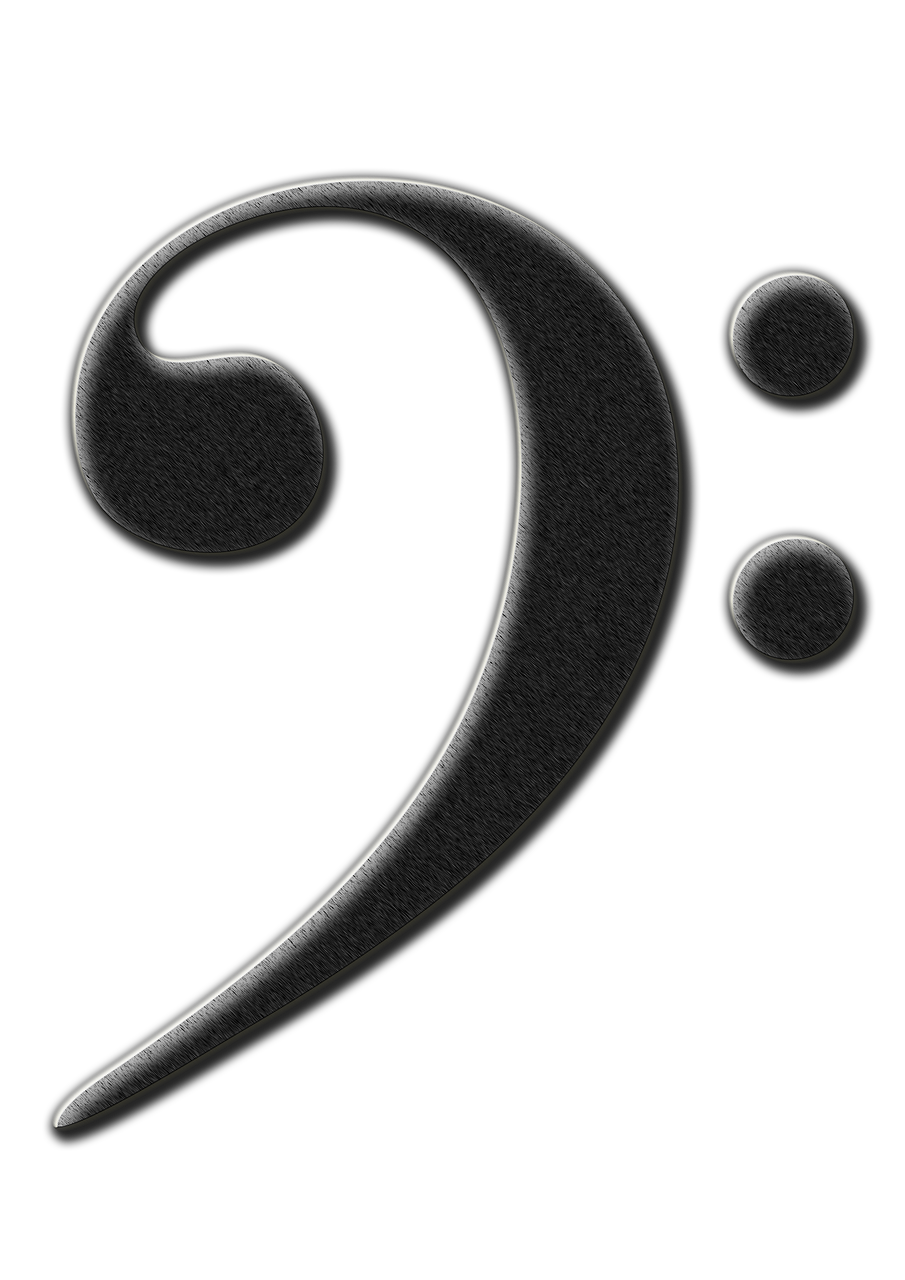 The bass clef is for low notes The bass clef is for low notes |
You find these clefs at the beginning of a set of 5 lines. This is what you read music on and it's basically an orientation so you know which lines means which notes.
Usually, you play the notes in the treble clef with your right hand. These are the higher notes. Play the notes in the bass clef with your left hand. These are the lower notes.
Now, I’m going to give you all of the notes on all the lines and spaces. After you go through them, I’ll recommend some exercises to help you practice them. It’s easier to learn them in little groups in order to remember them and play them quickly.
There Are Lines & Spaces To Read Music On
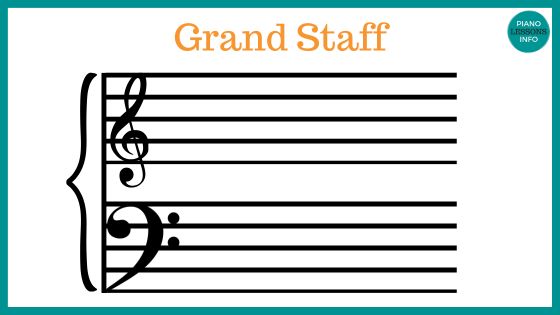
Music is written on lines and spaces – this is called the staff. When you put both clefs together, it is a grand staff.
When going up through the musical alphabet (like A, B, C, D), you alternate line – space – line – space. For example: A = line, B = space, C = line, D = space. This is for the notes that are right next to each other on the piano keyboard.
To learn where the notes are on the staff just by looking, you can learn some sayings. This is the easiest way to begin to read piano notes. Let’s start with the treble clef.
Notes on Spaces: Treble Clef
The letters for the spaces on the treble clef form a word: FACE. F is the lowest space on the treble clef, and E is the highest.
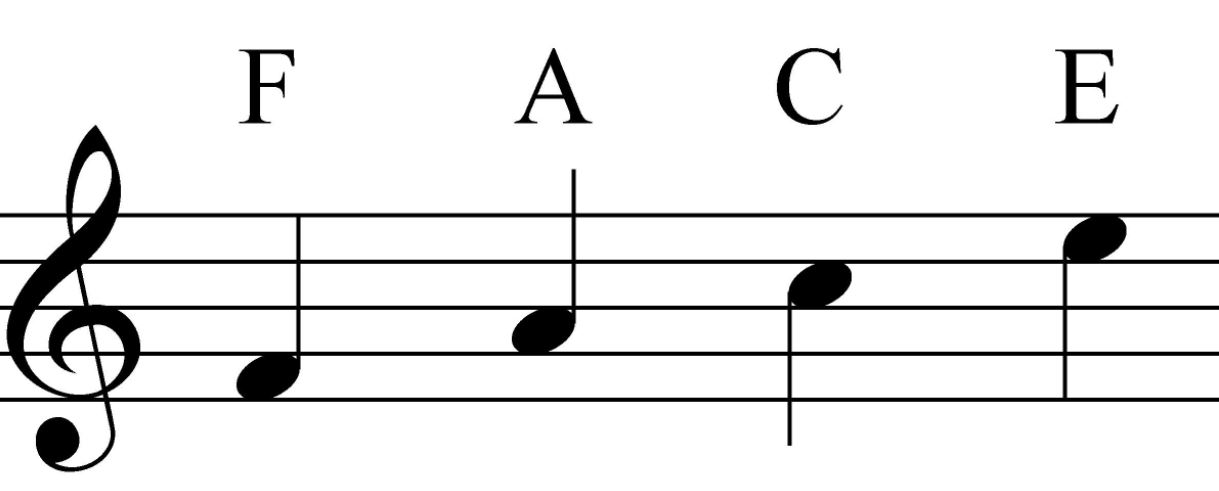
Notes on Lines: Treble Clef
The letters on the lines from lowest to highest are E G B D F. The saying that I use to remember this order is: “Every Good Boy Deserves Fudge.” Feel free to make up one that you like.
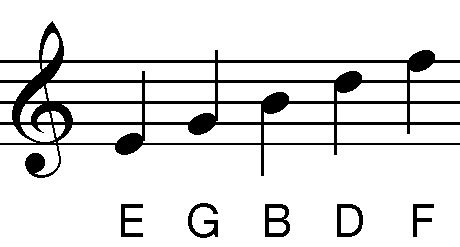
Notice that the lowest line – E – is followed by the lowest space – F.
Notes on Spaces: Bass Clef
Now for the bass clef. The sayings I use to remember the lines and spaces for the bass clef have to do with animals. For the spaces I use the saying, “All Cows Eat Grass.”
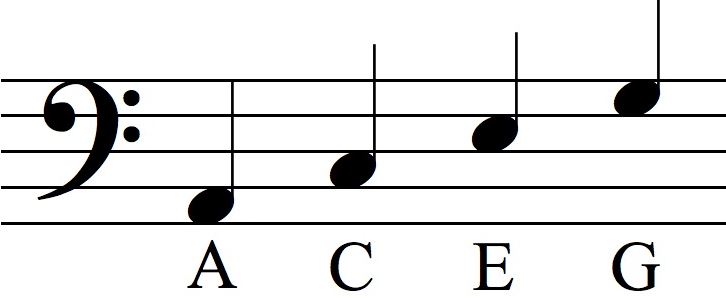
Notes on Lines: Bass Clef
For the lines in the bass clef, I use the saying, “Great Big Ducks Fly Away.”
One of my students likes the saying "Great Big Dumplings Fry Away" which is also pretty enjoyable to remember.
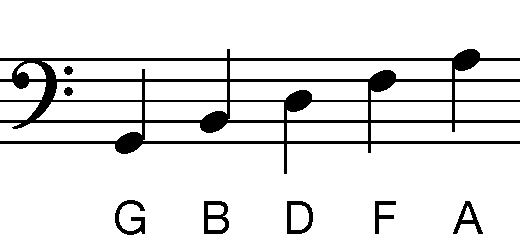
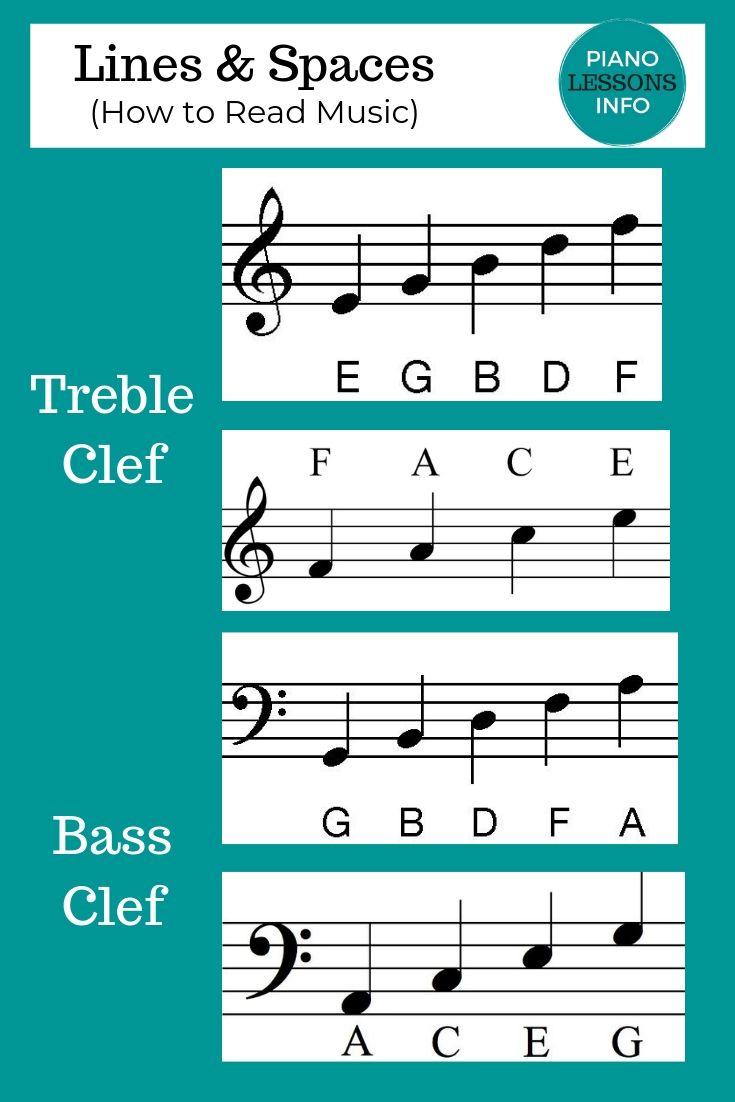
How Does This Fit with the Piano?
Each note corresponds with a particular key on the piano.
The E that is on the lowest line on the treble clef is the E that is 2 notes higher than middle C.
The A that is the highest line in the bass clef is 2 notes lower than middle C.
Here's the full diagram:

Need some help with they keys? This will help:
What Happens If You Need To Play A Note Off of the Lines & Spaces
For beginners, we really focus for a long time on learning these notes on the lines and spaces. However, there are a lot of notes on the piano and ways to read notes that go even higher or lower than this.
If you have heard of middle C, and I've just mentioned it, you'll not find it on the lines and spaces, it is on what is called a ledger line.
You can read more about this on notes above and below the staff, but what you do is keep drawing in little lines and writing notes on those so that you can play them.
This is what is looks like for middle C, followed by D and E. The line for C is added in and is not part of the staff for the treble clef.
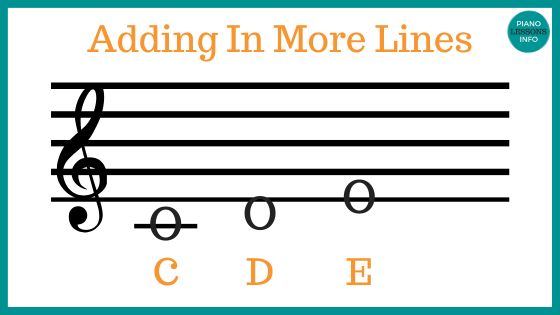
What You Know At This Point
This is what you know now:
- music is written on lines and spaces
- you play notes in the Treble Clef with your right hand (mostly)
- you play notes in the Bass Clef with your left hand (mostly)
- you need to eventually learn all the notes on the lines and spaces and the sayings help with that
- the notes on the grand staff correspond to specific notes on the piano keyboard
What About The Black Keys?
Great question and one that everyone wonders about when they are learning.
When you first start, it's generally on the white notes and these are the ones that use the music alphabet.
The black notes are named after the white notes and generally called a sharp or a flat.
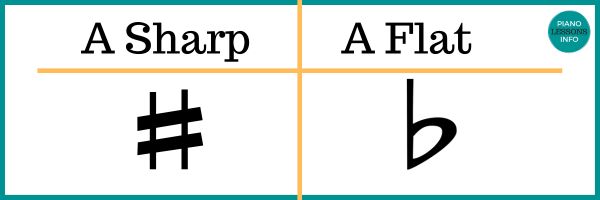
When you are ready to learn about sharps and flats, go to this page on piano music notes.
There are also some piano notes charts you can look at for a quick reference. Or the piano notes diagram page, you’ll find the notes on the staff in relation to the notes on the keyboard.
Rhythm & Notes: The Next Phase
After you learn what the notes are and how they are matched to the piano, the next thing we need to understand and rhythm.
Notes come in all sorts of different shapes and sizes and they get different "counts". Basically, you need to know how long to hold a note for.
Understanding Time Signatures
A time signature comes at the beginning of a piece of music and looks like a fraction. The most common time signature is 4/4.
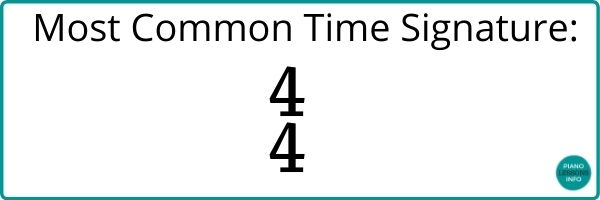
The top 4 means we're going to count to 4 within a bar - that is in between 2 vertical lines.
So we're counting to 4.
The bottom 4 means that a quarter note gets one count.
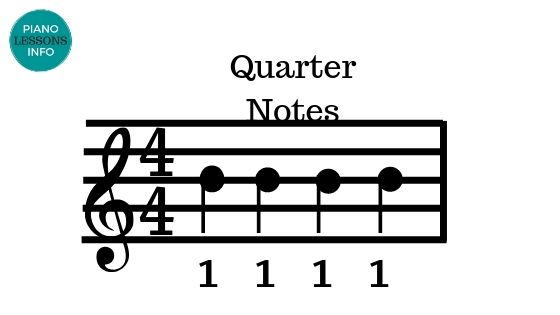 In 4/4 time, a quarter note gets one count.
In 4/4 time, a quarter note gets one count.When a quarter note gets one count, that means a half note gets two counts.
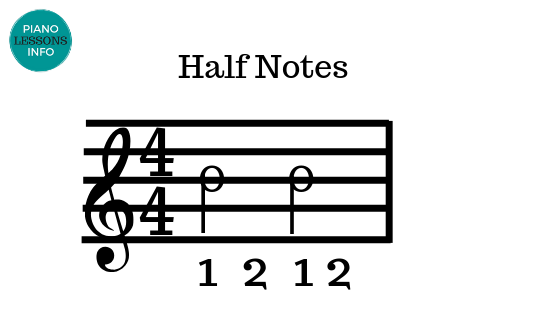 In 4/4 time, a half note gets 2 counts.
In 4/4 time, a half note gets 2 counts.A dotted half note, that is a half note with a little dot after it, gets 3 counts.
A whole note - which looks like a hole - gets 4 counts.
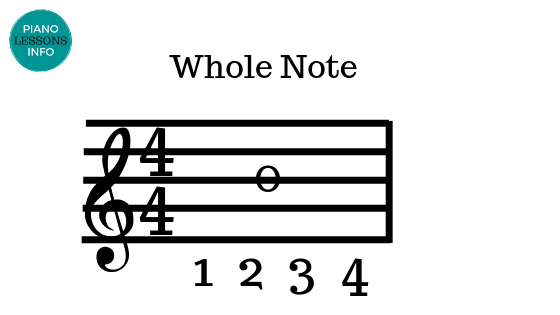 In 4/4 time, a whole note gets 4 counts.
In 4/4 time, a whole note gets 4 counts.These are the essential notes to understand in terms of rhythm. You can learn more about them here on the music rhythm symbols page as well.
I'd also recommend learning to count beats in music.
Now That You Can Read Piano Notes ... What Do You Do Next?
You've now learned the essentials on how to ready piano notes. So what now?
Now you have to put this information into practice. Try and play something. Get something to practice.
Practice is all that is needed to really be able to ready sheet music and read it well.
You can:
- learn more about beginner piano music
- get a beginner piano book
- take an online course
- do a quiz on reading notes (you should do this even if you're practicing something)
Take a Name the Notes Quiz
Start with this simple game and drag the notes into the correct container.
Also, try out our sharps and flats quiz, notes game, drag and drop notes game, and our name the music notes quiz for more piano quiz games
Hope you enjoyed learning how to read piano notes!
Happy practicing!
Free Download:
Ultimate Chord Cheat Sheet
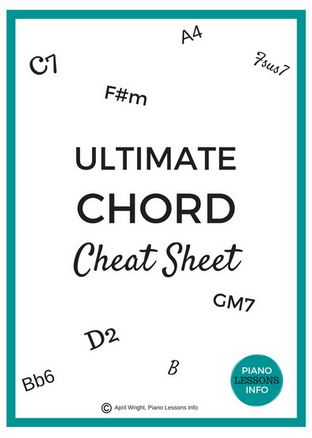
Subscribe below and get free access to the (printable) Ultimate Chord Cheat Sheet.
Return from Read Piano Notes to Piano Lessons Info Homepage.
Recent Articles
-
Piano Notes Chart
Nov 20, 23 10:21 PM
Find a piano notes chart for treble clef and bass clef notes as well as the different types of notes. -
D Chord on Piano + Diagram, How To & Theory
Oct 24, 23 12:20 AM
Learn how to play the D chord on piano with diagram, fingering, D/A, D/F# and a theory explainer. -
Diminished Piano Chords: Chart & How to Make Them
Oct 09, 23 09:23 PM
Learn the different diminished piano chords and how to make them. Here you'll find both a diminished chord chart and an explanation.
- Home
- Reading Notes
Free Download:
Ultimate Chord Cheat Sheet

Subscribe below and get free access to the (printable) Ultimate Chord Cheat Sheet.
